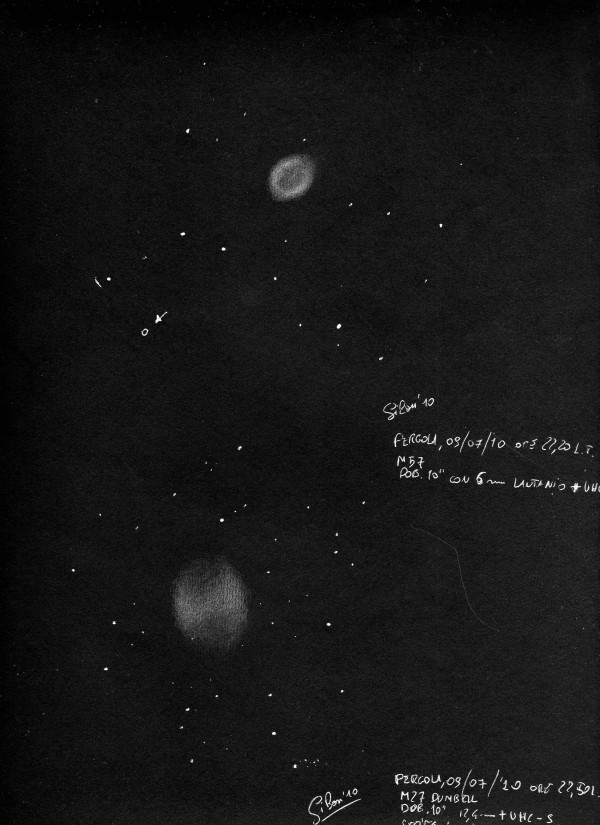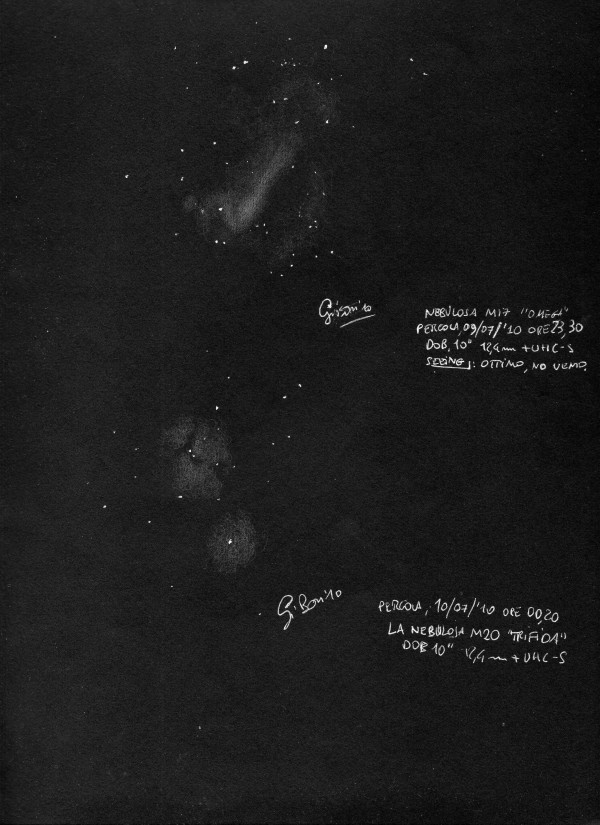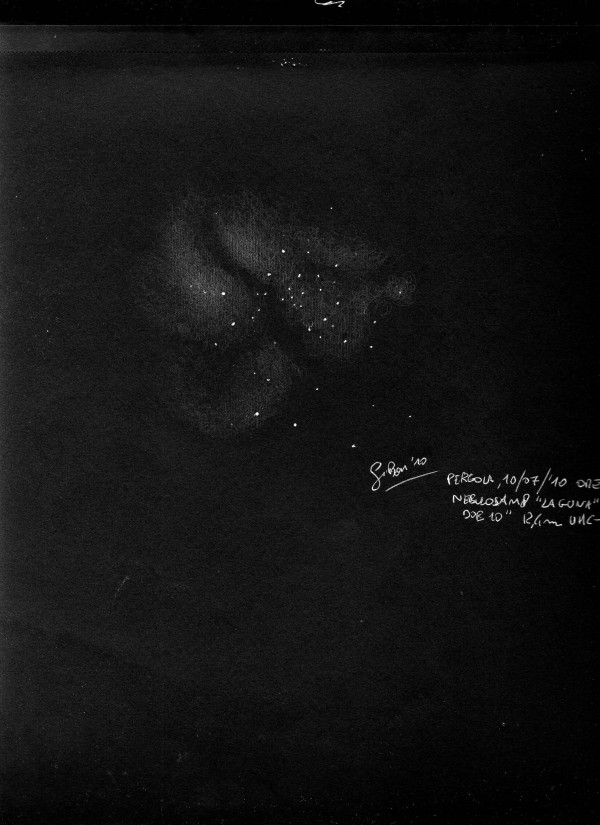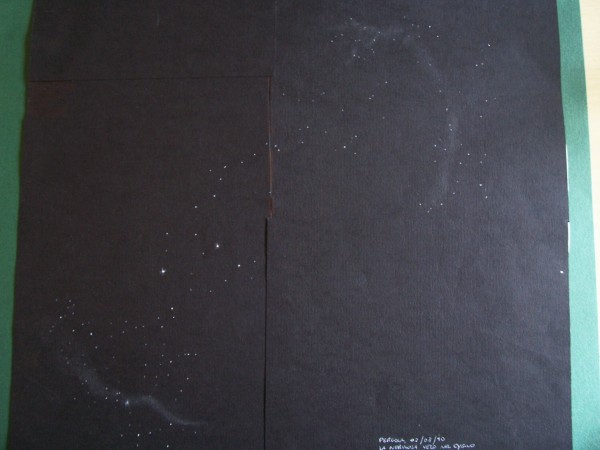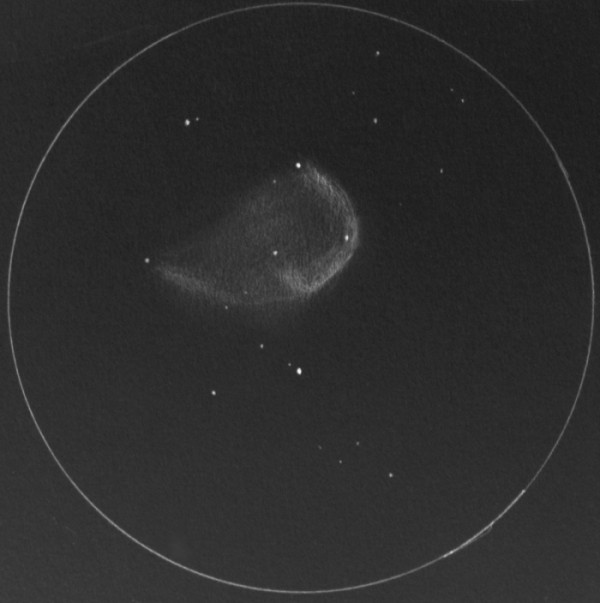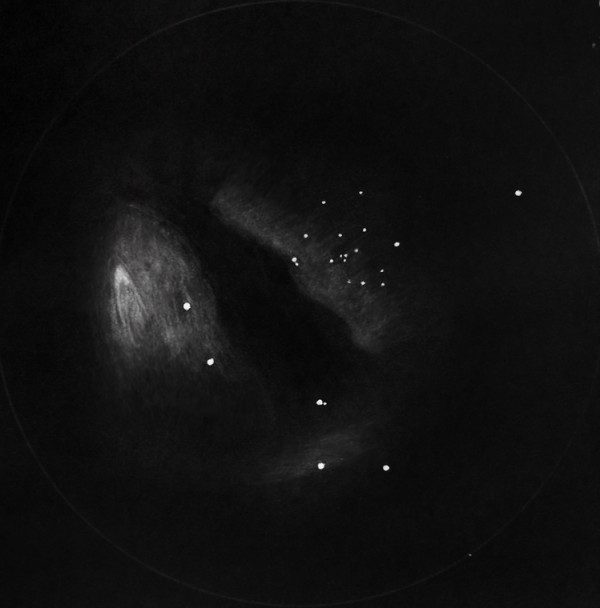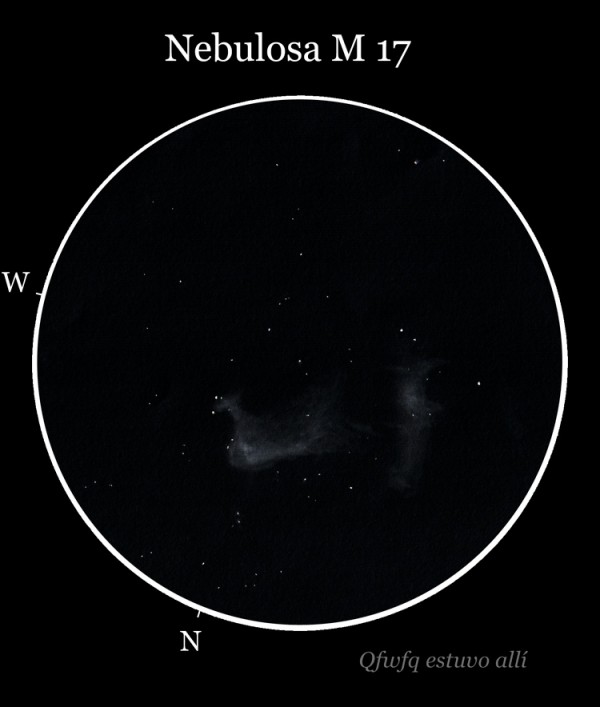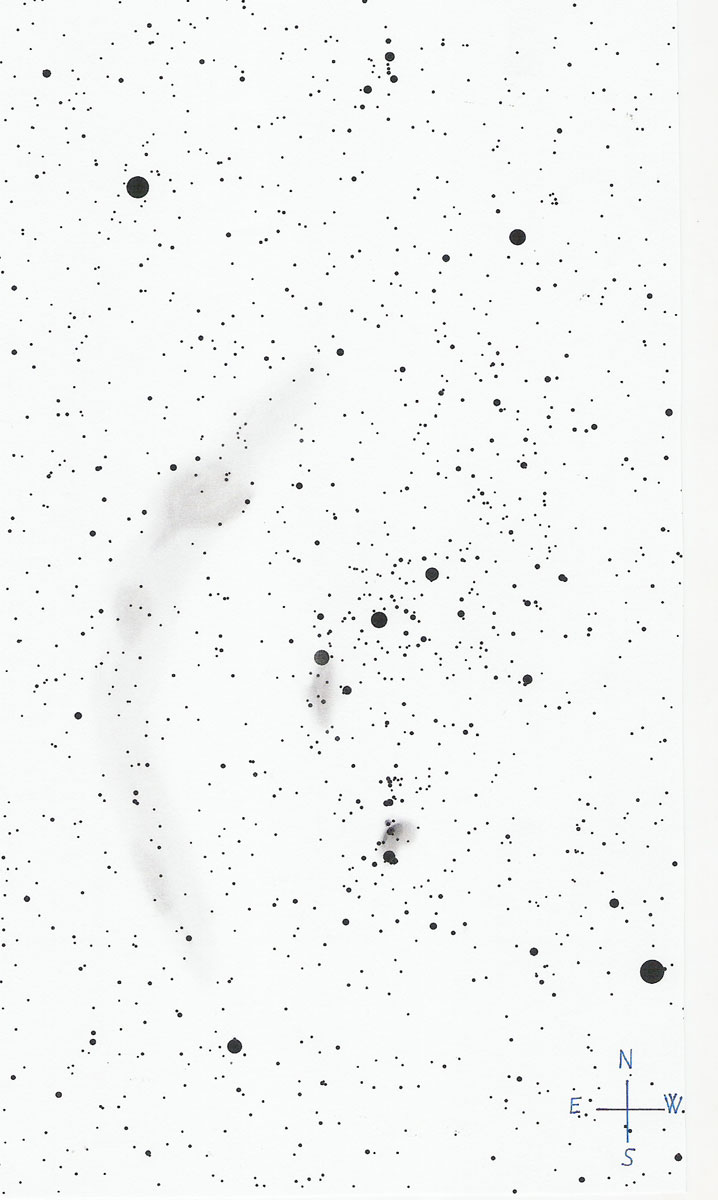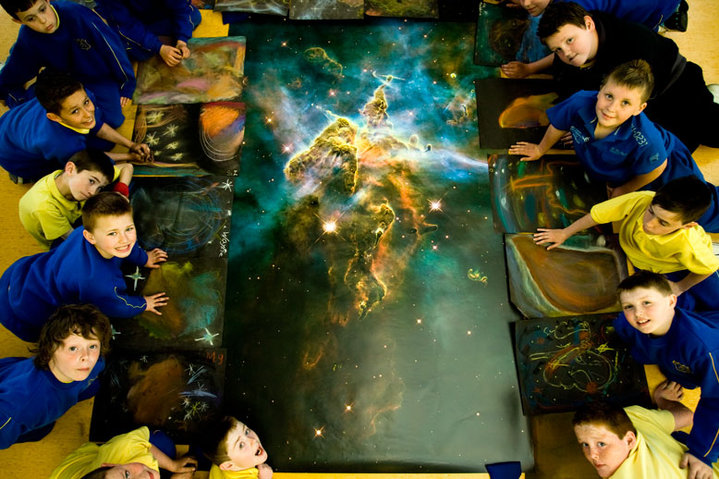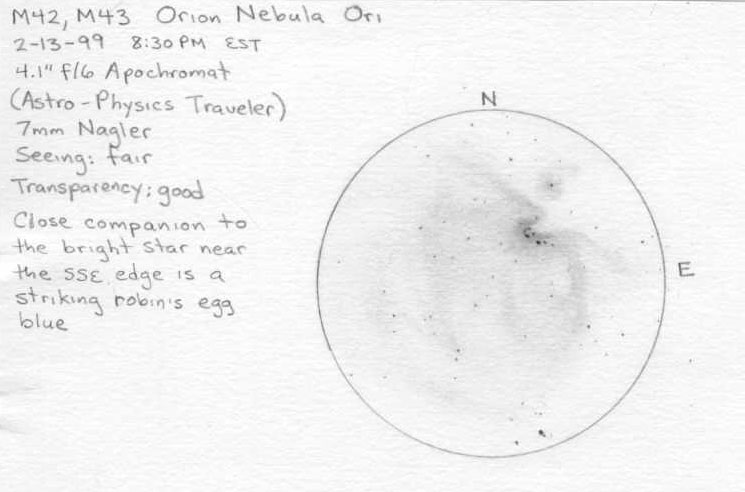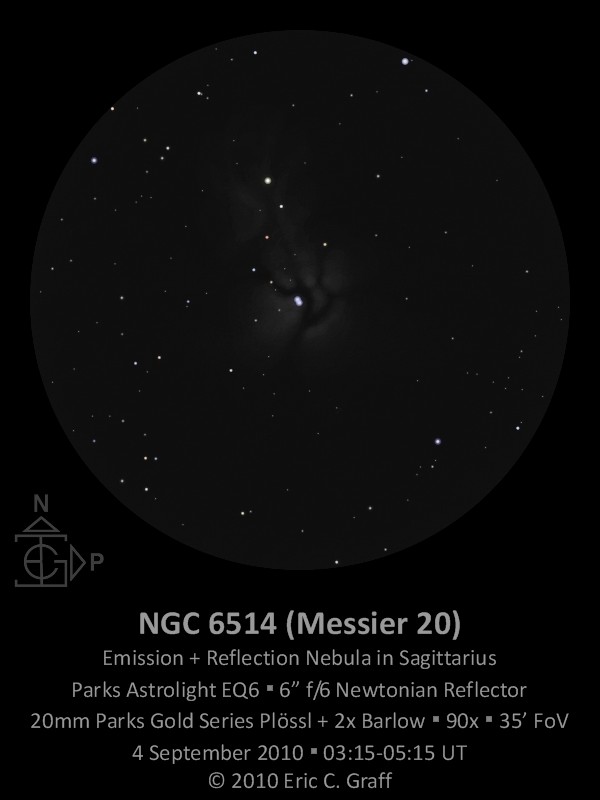
Object Name: NGC 6514
Also Known As: Messier 20, C 1759-230, Collinder 360, LBN 27, Trifid Nebula
Object Type: Emission + Reflection Nebula and Open Cluster
Constellation: Sagittarius
Right Ascension (2000.0): 18h 02m 42.1s
Declination (2000.0): –22° 58′ 19″
Magnitude: 6.3
Dimensions: 20′ x 20′
Distance: 5,000 light years
Discovery: Guillaume Le Gentil c. 1747, Charles Messier on 5 June 1764 with 3.3-inch refractor
NGC Description: !!! vB, vL, trifid, D* inv
Telescope: Parks Astrolight EQ6 • 6″ f/6 Newtonian Reflector
Eyepiece/Magnification: 20mm Parks Gold Series Plössl + 2x Barlow • 90x • 35′ Field of View
Filter: Lumicon UHC
Date/Time: 4 September 2010 • 03:15-05:15 UT
Observing Location: Oakzanita Springs, Descanso, San Diego Co., California, USA
Transparency: NELM 6.3; TLM 12.2 (with filter)
Seeing: Pickering 8
Conditions: Clear, calm
Media: #2 pencil, cartridge paper, artists’ chamois, blending stumps; scanned and processed in Microsoft Picture It!
One of the four “Great Nebulae” of the Summer Sky (the others being M8, M16, and M17, of course), Messier 20 is faintly visible to the naked eye from a dark site (and easily visible in binoculars from most anywhere). Look for it about 1½° NNW of larger and brighter M8, above the spout of Sagittarius’ Teapot asterism. Famously photogenic, M20’s contrasting pink (emission) and blue (reflection) components, each with their own illuminating central stars (and distinctive dark lanes in the former) are familiar to all astronomy enthusiasts and recognizable as one of the icons of the night sky even by those with only a casual or passing interest in things astronomical.
Through the eyepiece, our view of M20 is less spectacular than the photographs we are all familiar with, but the view is exquisite nonetheless. M20 stands out even at low magnifications as a silver mist in two lobes surrounding a pair of 7th magnitude stars; the southern lobe is slightly larger and brighter than the northern. Increasing the magnification to moderate levels (60x-90x) reveals the intricate web of dark nebulosity running through the southern lobe, dividing the HII region into the segments responsible for its popular name, the Trifid Nebula. The bright central star is resolved into two blue-white components known as Herschel 40 (7.5, 8.9; 10.7″; 212°); a 10th magnitude companion found between these two stars is best seen at high magnifications. Numerous faint stars are superimposed on the face of the nebulosity – this scattered grouping is presumably the open cluster component of our target and is also designated Collinder 360. The tendrils of dark nebulosity across the face of M20 are part of a larger cloud of interstellar dust which isolates the bright nebulosity from the surrounding star fields; this dark cloud is designated Barnard 85, it’s most prominent patch drives a blunt wedge between the emission and reflection portions of the nebula from the NW.
Eric Graff
